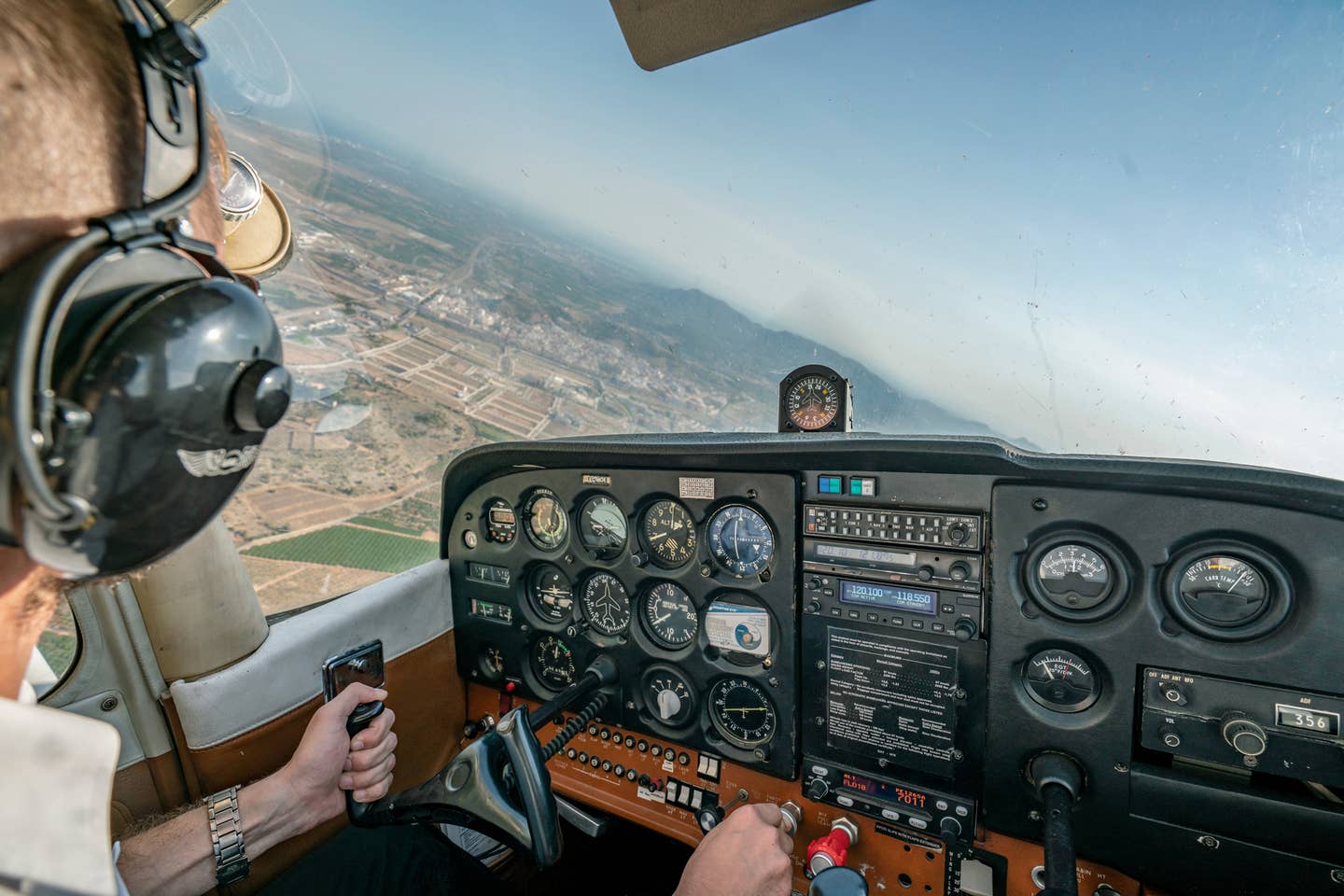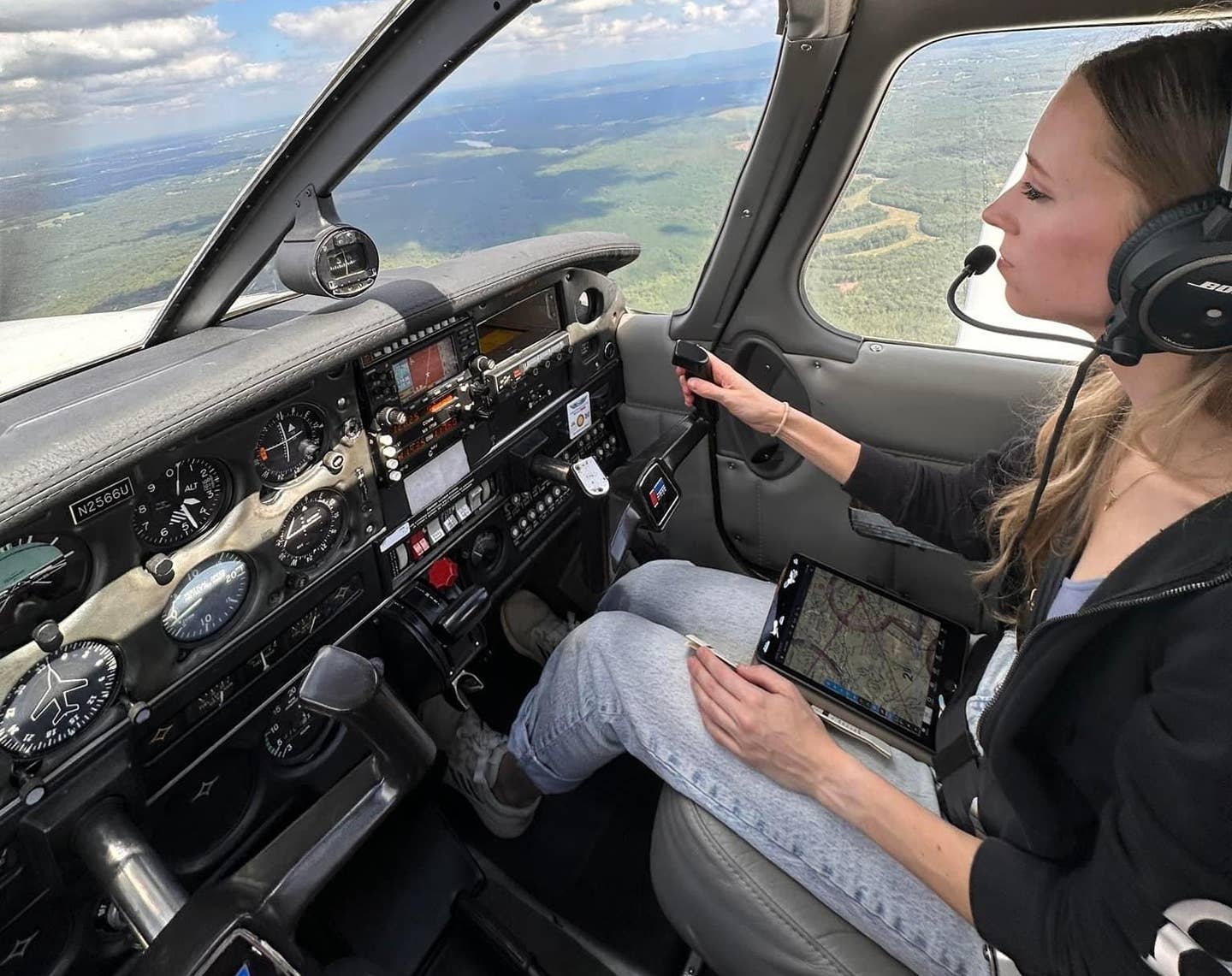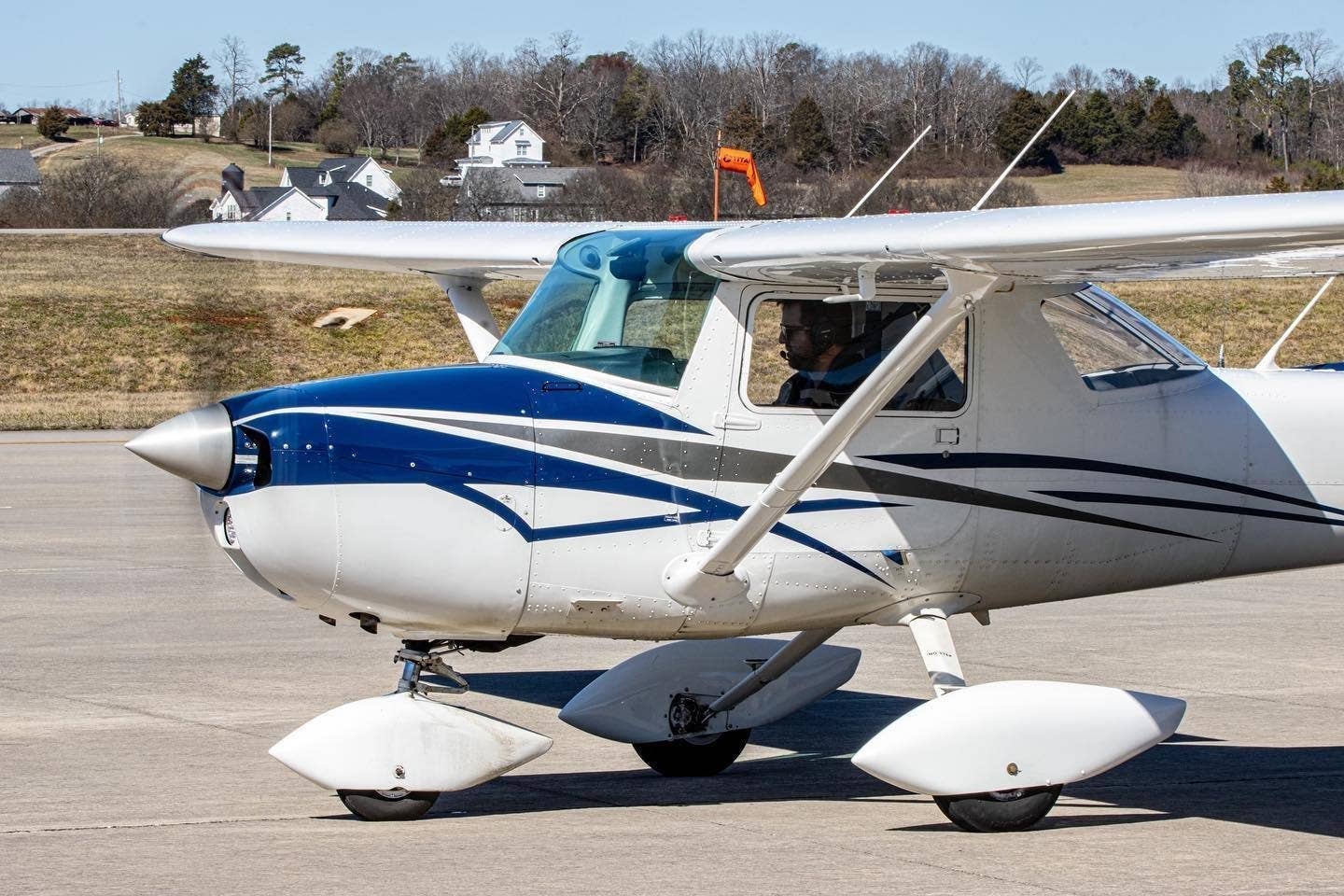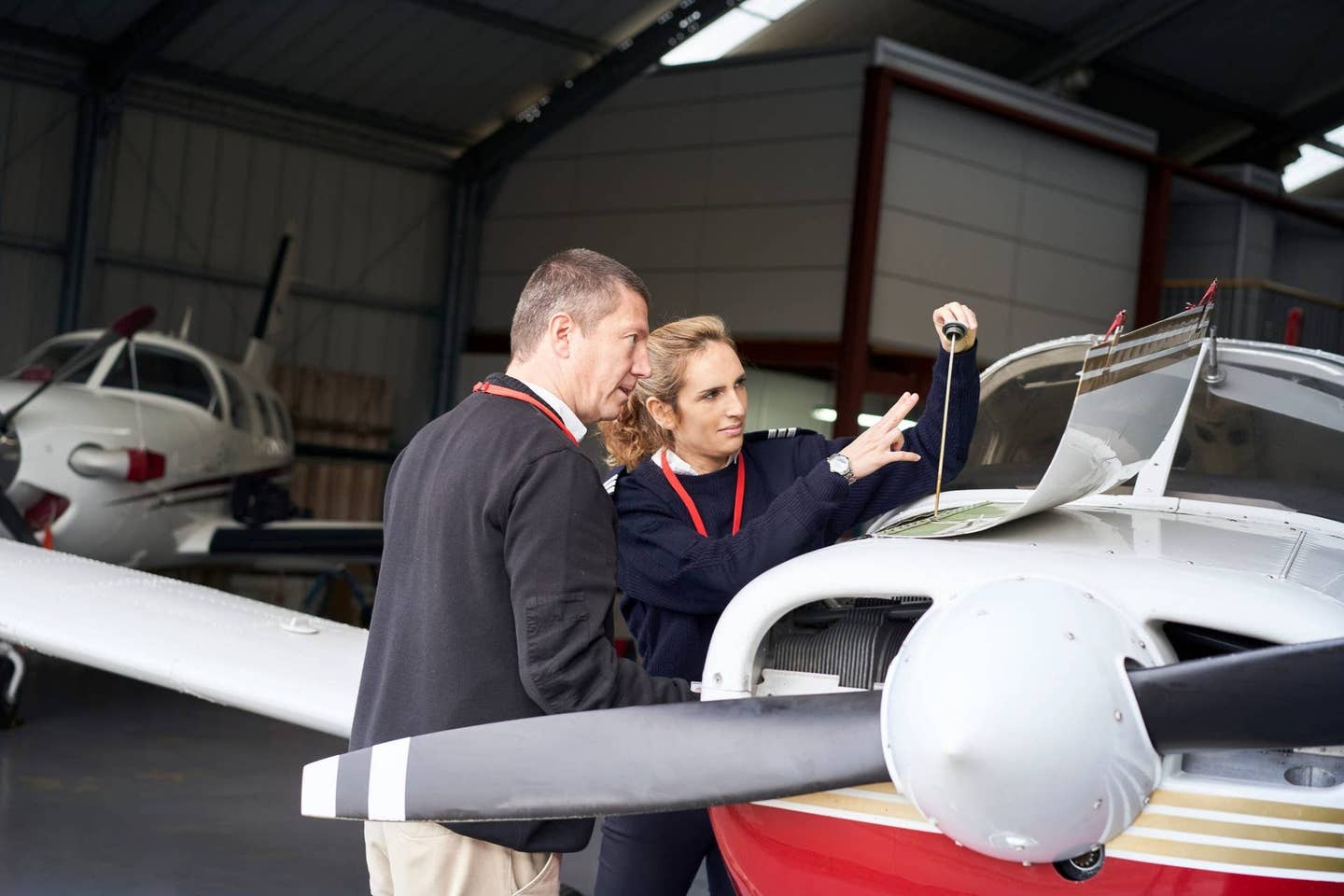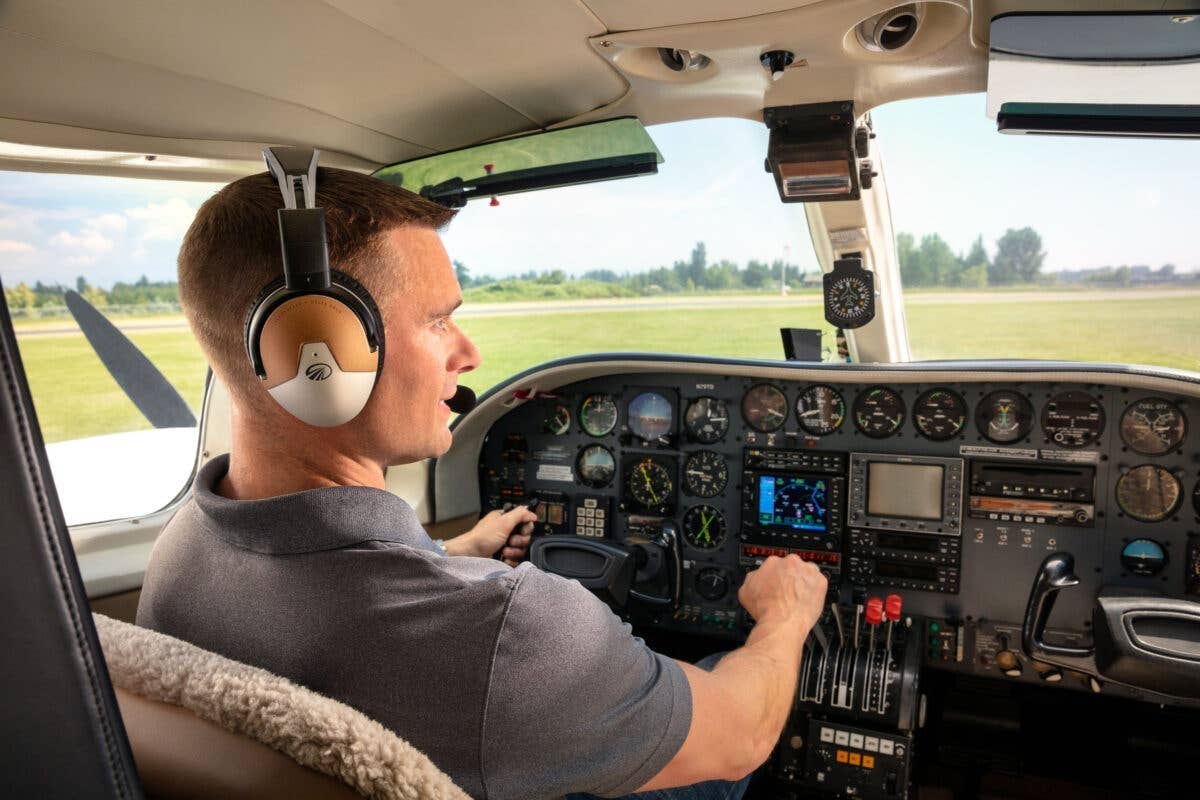 Photo by Scott Slocum |
As a twenty something, I figured that the only chance I would ever have of getting into an F-4 Phantom cockpit would involve a successful run for Congress, followed by finagling a seat on the Armed Services Committee. Years passed, and that pipe dream vanished like a wisp of smoke long forgotten. So, I was very excited when I had the opportunity to visit Holloman AFB in Alamogordo, N.M., and fly the simulator used to train German Air Force pilots.
The simulator device is mounted on a limited-motion hydraulic platform. The control panel allows the instructor to monitor the pilot's responses to every imaginable in-flight emergency and tactical problem. The simulator requires the power of two mainframes to operate.
The first impression one gets is how small the cockpit really is---definitely more cramped than a Cub or a Citabria. There are more buttons and switches than I've ever seen in one place. I told the instructor that I had never started a jet engine and would need help getting underway. Through the magic of electronics, he put me and the airplane at the end of the runway with both engines running, thus saving us at least a half hour of fumbling around.
When taking off at max takeoff weight, 55,000 pounds, the airplane won't leave the ground without the use of afterburners. Afterburners are activated by advancing the throttles to the forward stop, then pushing them left and forward again, somewhat like shifting into compound low on a heavy truck. The aircraft doesn't fly itself off the runway. The nose is lifted at 140 knots, and the mains clear concrete at 180. Gear and flaps are on the left. The levers are distinctively different. The gear lever is a short stick poking out of the bulkhead with a knob on the end shaped like a yo-yo. The flap switch has a smaller tapered throw that looks like a flap and won't be mistaken for any other switch in the vicinity. Gear and flaps are retracted as soon as the climb out is established. I came out of burners and leveled off at 10,000 feet in a frighteningly short period of time.
 Photo by Alberto Curieses |
This airplane is a joy to fly! Once trimmed, the controls are lighter than I expected but heavier than one encounters in most general aviation aircraft. I did aileron rolls to the left and right. Coordinated turns are easy because the stick and rudder seem well harmonized at normal flying speeds. I stuffed it for the first time when I attempted a loop and didn't make it tight enough. I fell out of the sky in an inverted flat spin! The instructor let me fall almost to the ground before pressing the reset button. (I learned later that if the instructor allows the aircraft to crash, it takes about 30 minutes to reboot the computers. As a result, the instructors are motivated to stop the simulator once it's clear that the student isn't going to recover control.) The instructor put me right side up and where I was before. In the second attempt, I used more power and tried to maintain 2.5 G's over the top. That worked fine, and I completed the maneuver without further trouble.
The biggest challenge was landing the beast. The instructor gave me the easiest possible setup, a five-mile straight final to the flare. This airplane has such a high wing loading that it lands really hot. One flies the approach with the power set at 82%! Gear and flaps reduce the speed to 180 knots. When the gear comes down, rudder and ailerons are linked. Thus, only stick inputs are needed on final. Still, I had trouble keeping the plane lined with the runway on the three landings I attempted. In fact, I ended up in the dirt in the first two. The third was marginal, to put it charitably. Standing on the toe brakes, I wrestled the monster to a stop and realized that I was sweating, even though the room was air-conditioned. This was as close as I'll ever get to the real thing, and the experience was a total rush. Weeks later, I'm still playing the mental videotape!
My 12-year-old son, Kirby, was next in the cockpit. Having flown fairly sophisticated simulators at aviation camp, he was smooth on the controls. When it was time to make a 180-degree turn to return to base, he asked the instructor if he could make an Immelman turn instead. Kirby proceeded to blow him away when he executed the maneuver smoothly and made three beautiful landings.
This is your column! We'd like to hear from you about your unforgettable flights. Please send your stories and photos to editor@planeandpilotmag.com

Subscribe to Our Newsletter
Get the latest Plane & Pilot Magazine stories delivered directly to your inbox

